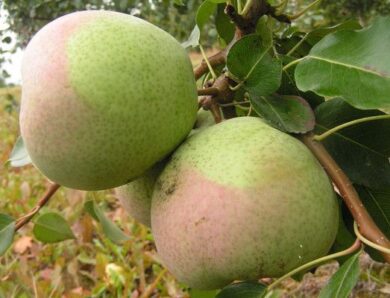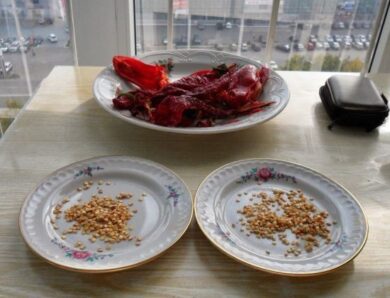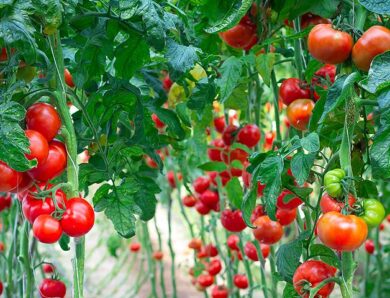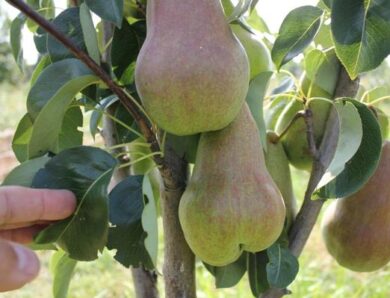Pattison: cultivation and care in the open ground, collection and storage
With proper diligence in the garden you can always get a generous and tasty harvest of vegetables from the beds. However, not all gardeners know, how to grow squash. The main points of that will be considered below, how to grow squash in the open ground.
The best varieties
Squash in our country is a popular culture. Among all the variety, the most popular are these varieties of these vegetables:
- White 13. This is a semi-shrub / shrub plant, forming small fruits of light green or white color. It has a high yield;
- Umbrella. Early ripening variety. Its fruits can weigh up to 1,5 kg. Characterized by high yields;
- Disk. The fruits have a universal purpose. Differs in fertility. From one plant is removed to 3 kg of vegetables. Low immunity to white rot and powdery mildew;
- Tabolinsky. This is a medium-ripe variety. Vegetables have an elongated and flat shape. The fruits weigh about 300 p. Their color is bright orange. It is resistant to parasites, as well as high yields;
- Ladybug. It was obtained in the Kuban. Vegetables are small, plate-like shape. They weigh on average about 300 p. The excellent taste of the fruit is characteristic, high and stable yield.
In addition to the above varieties, also a popular variety of squash called UFO. Its fruits are white and orange. They have low weight.
Selection and sowing of seeds
To understand, how to grow squash, you need to know first, how to choose the seeds of the culture and plant them. The yield of grown plants directly depends on it.
Seeds can be purchased in a store or prepared yourself. They should not show signs of infection or damage. To increase seed germination, them on 15 minutes placed in a solution of manganese. After that, they are washed in water at room temperature. Then the seeds are placed in a solution of wood ash. Keep them in this solution for a day. Next, the seed is germinated in the apartment at room temperature +20-25 degrees.
It is best to grow this crop through seedlings. To do this, in late April or early May, the seeds are planted in plastic cups. It uses a universal soil. Sowing material should lie at depth 3-4 cm After planting the seeds watered. It is worth noting, that squash should be watered with warm water. Then the cup is covered with glass / film and exposed to the sun.
Growing and dipping seedlings
Care for squash at the seedling stage begins, when the first stairs appear. When they appear, the glass is removed from the container, and the plants are transferred to a cool place with temperature +18 °C. In this place the seedlings are worth a week, then it is returned to a warm place. At this time, watering plants is moderate and rare. On the 10th day of life of seedlings fertilization is performed (mullein solution). It is carried out before planting in open ground or in a greenhouse.
Picking grown seedlings is not performed. When forming in one cup of two seedlings weaker plant is not pulled out, and just cut with scissors. It should be cut above the soil surface. So, in the ground there are uninjured roots of the remained stronger sprout.
Site selection and preparation
How to plant squash seedlings? To do this, you need to find the optimal place. The selected area for growing this crop should be fertile soil. Remember, that all representatives of melons need magnesium and potassium. Therefore, before planting seedlings in the beds fertilizers are applied, containing these substances.
The selected area should be well lit.. Shading is not recommended. It is also best to choose a place, protected from drafts and strong winds. When the optimal place for growing is selected, beds are prepared and seedlings are planted.
Landing in the ground and subsequent care
Planting seedlings in the ground is performed then, when the plants formed 2-3 real leaves. This usually happens a month after sowing the seeds. It is best to land in the morning or evening, when the sun has set. Plants should be planted in beds together with a lump of earth. After planting the seedlings should be slightly shaded. You can find the statements of gardeners, that “I plant seeds, not squash seedlings ". This approach is also practiced, however, it yields a later harvest.
Sadjachi patissons, remember, that their cultivation and care require compliance with certain rules. It is important to know, how to care for squash, to achieve excellent fruiting from plants. Planted shrubs are especially important to monitor during flowering.
Watering and fertilizing
Watering is infrequent, except during periods of drought. Remember, that water should not get on vegetables and ovaries. Watering is performed as the plants grow 1 or 2 times a week with a gradual increase in water volume 5 to 10 l per square meter. m (in greenhouses or open ground).
Squash is fed for the first time after formation 3-4 real leaves. In this case, fed with potassium salt, ammonium nitrate and superphosphate. The second time the bushes are fertilized, when the first flowers appear. At this time, a solution of mullein or chicken manure is added to the soil. One bucket of feed usually goes on 10 bushes.
Control of diseases and pests
Squash are not very resistant to disease. Therefore, without preventive treatments, they are often infected with white rot, ascochitosis, powdery mildew, anthracnose and black mold. Also, plants are often attacked by various parasites. Planting this crop should be checked frequently for the first symptoms of the disease or the appearance of insects.
As we see, planting and caring for squash in the open ground is not a difficult task.
Collection and storage
It is important to know, how to store squash, otherwise you can lose almost the harvest. You need to collect vegetables when they reach technical maturity. It is determined by the skin, which becomes waxy and tender. So, fruits are eaten unripe. Otherwise, their storage will become impossible.
After assembly, the crop is sent to storage. It is stored under certain conditions, which are determined by the varietal variety of culture. Properly covered, it will withstand a great deal of adverse conditions. The crop should be inspected periodically, to clean specimens began to deteriorate.
Now you know, how to squat. Growing and caring for them in the open ground is a simple process, compliance with the rules which will allow you to get a bountiful harvest. With proper storage, you will always have delicious vegetables on the table, rich in various vitamins.
Video "How to care for squash"
In this video you will learn about it, how to properly care for squash.




